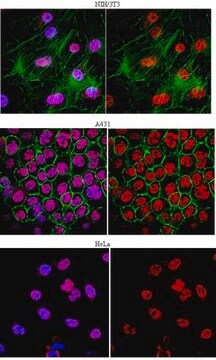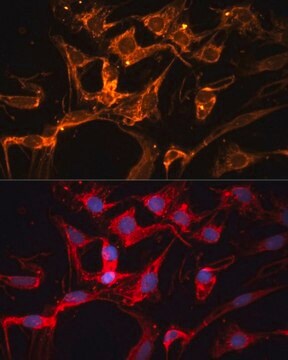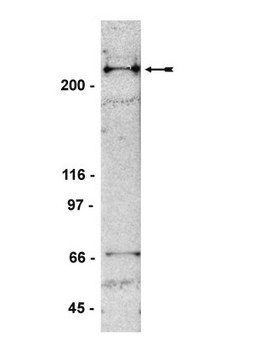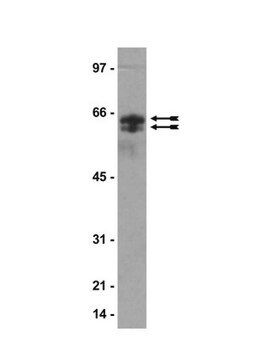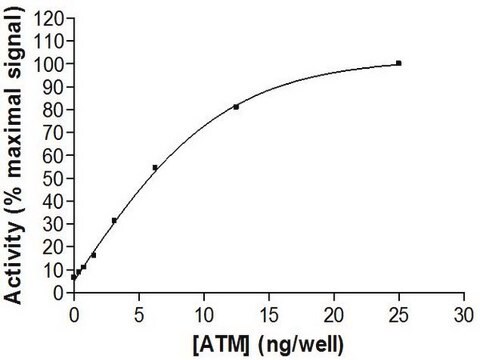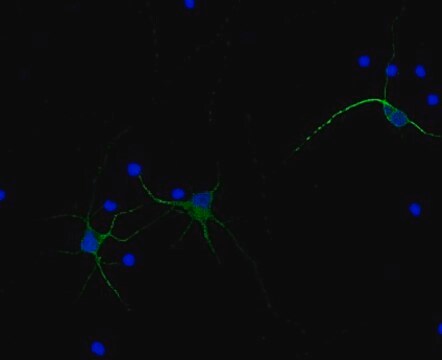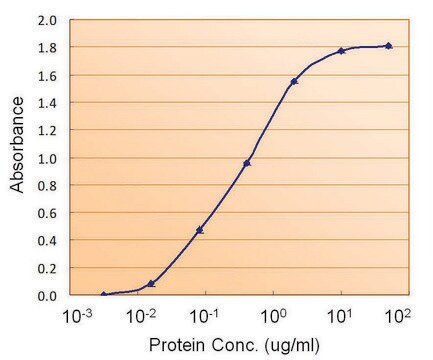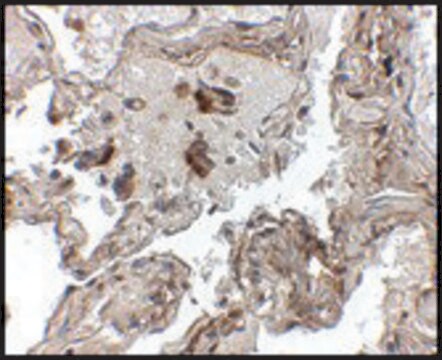05-1517
Anti-hnRNP Q Antibody, clone 18E4
clone 18E4, from mouse
別名:
heterogeneous nuclear ribonucleoprotein Q-like, Synaptotagmin-binding, cytoplasmic RNA-interacting protein, Glycine- and tyrosine-rich RNA-binding protein, GRY-RBP, NS1-associated protein 1
About This Item
おすすめの製品
由来生物
mouse
品質水準
抗体製品の状態
purified immunoglobulin
抗体製品タイプ
primary antibodies
クローン
18E4, monoclonal
交差性
human
テクニック
immunocytochemistry: suitable
immunoprecipitation (IP): suitable
western blot: suitable
NCBIアクセッション番号
UniProtアクセッション番号
輸送温度
wet ice
ターゲットの翻訳後修飾
unmodified
遺伝子情報
human ... SYNCRIP(10492)
詳細
特異性
免疫原
アプリケーション
エピジェネティクス及び核内機能分子
RNA代謝及び結合タンパク質
Cited by independent researcher using a representative lot.
Immunoprecipitation
Cited by independent researcher using a representative lot.
品質
Western Blot Analysis: 1 µg/ml of this antibody detected hnRNP Q on 10 µg of HeLa cell lysate.
ターゲットの説明
物理的形状
保管および安定性
アナリシスノート
HeLa cell lysate
その他情報
免責事項
適切な製品が見つかりませんか。
製品選択ツール.をお試しください
保管分類コード
12 - Non Combustible Liquids
WGK
WGK 1
引火点(°F)
Not applicable
引火点(℃)
Not applicable
適用法令
試験研究用途を考慮した関連法令を主に挙げております。化学物質以外については、一部の情報のみ提供しています。 製品を安全かつ合法的に使用することは、使用者の義務です。最新情報により修正される場合があります。WEBの反映には時間を要することがあるため、適宜SDSをご参照ください。
Jan Code
05-1517:
試験成績書(COA)
製品のロット番号・バッチ番号を入力して、試験成績書(COA) を検索できます。ロット番号・バッチ番号は、製品ラベルに「Lot」または「Batch」に続いて記載されています。
ライフサイエンス、有機合成、材料科学、クロマトグラフィー、分析など、あらゆる分野の研究に経験のあるメンバーがおります。.
製品に関するお問い合わせはこちら(テクニカルサービス)